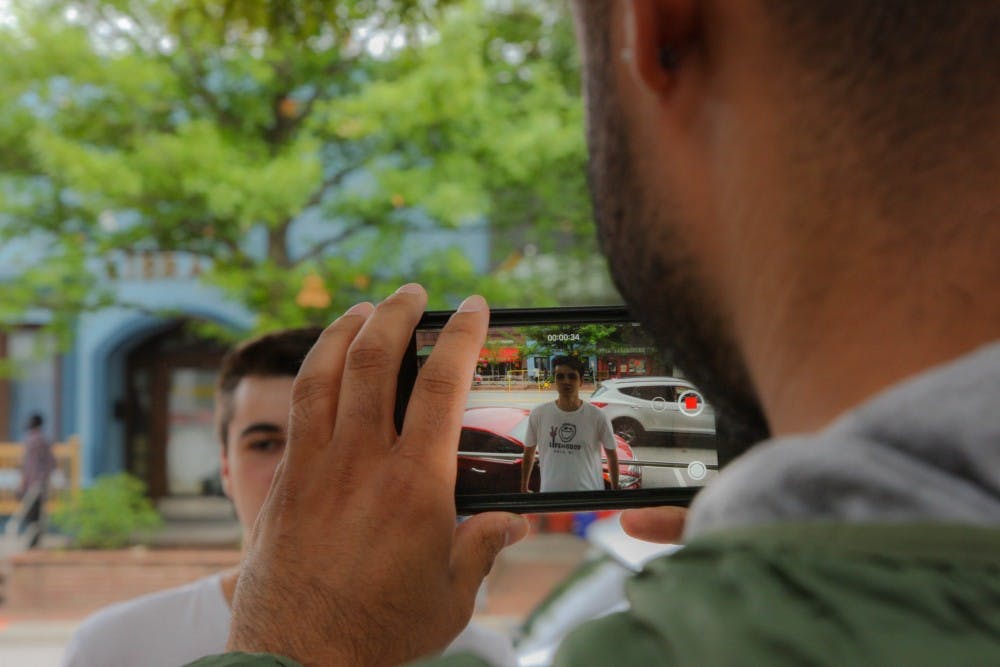MEJO majors – say hello to your newest tool for videography and digital storytelling that the UNC School of Media and Journalism is implementing into your curriculum: your smartphone.
It's no longer necessary to carry around an old video camera around campus in order to digitally capture an inspiring moment that could happen at any time. Instead, students will be using smartphones for the same purpose.
Laura Ruel, the UNC director of journalism, said smartphones are becoming widely used in the industry because the video quality is just as good as many video cameras that are out there now, if not better. They are becoming an essential journalistic tool not only for filming, but also for audio recording, quick note-taking and much more, Ruel said.
And smartphones have not only changed how people collect information. They have also changed how they consume it, she said.
“We want everyone in the School of Media and Journalism to have experience in filming from their phones,” Ruel said. “It is a trend that is happening and it is just going to get bigger and bigger.”
One required core class for Media and Journalism majors, MEJO 121: Introduction to Digital Storytelling, will teach students the ins and outs of how to properly utilize their phones to best tell a story through film. iPods and iPads are available to check out from the equipment room in Carroll Hall for students who don’t own smartphones.
Ruel said MEJO 121 students download the smartphone app called Filmic Pro, which contains the advanced features of a video camera and gives the creator a lot of control over the video. It contains high-quality image capture, adjustable lighting and focus, frame rates, audio control, motion FX and more.
“As a former TV reporter, I could definitely see how a news director these days would ask them to record something using their phones,” Heather Stevenson, a professor in the School of Media and Journalism, said. “And if a reporter had that skillset, that would be amazing.”
Justin Kavlie, Ph.D. student and instructor of MEJO 121, said there are pressing times in the journalism field when there could be things happening, such as protests, where reporters don't have large cameras on hand. In these cases, the phone also provides the elements of timeliness and convenience.



